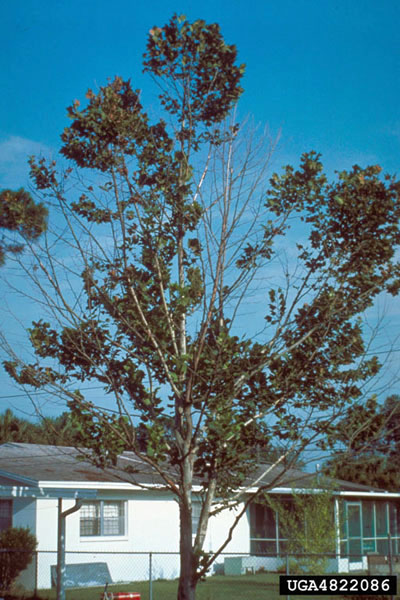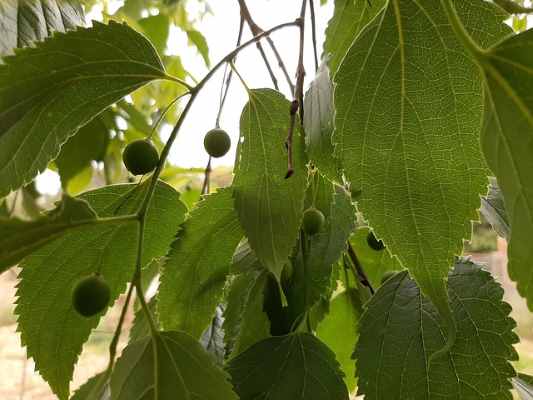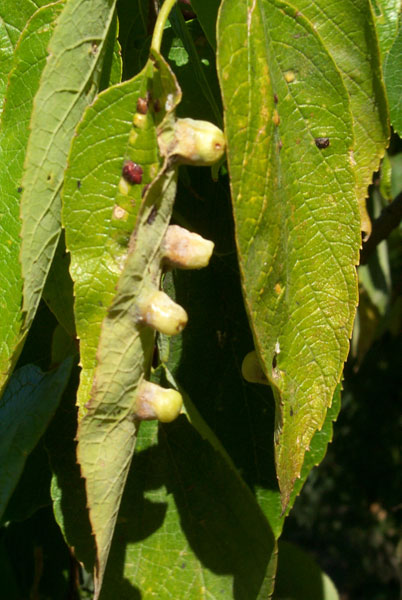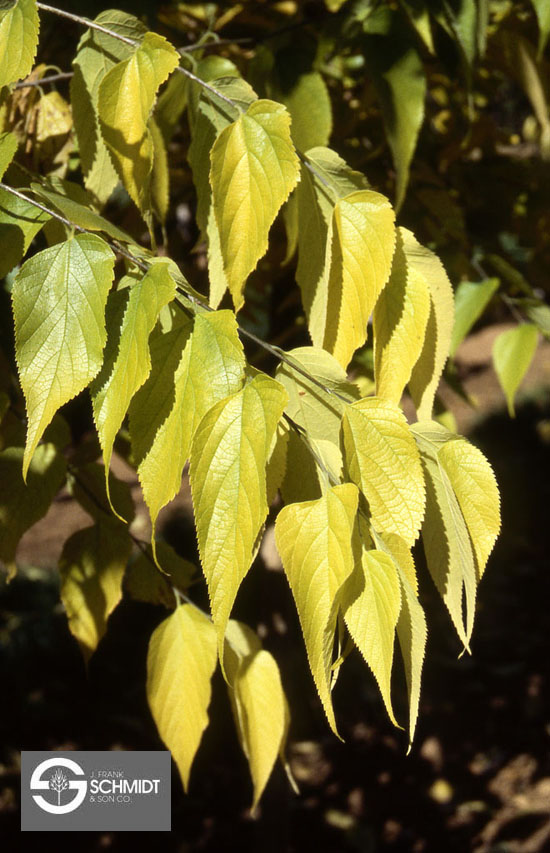hackberry tree leaves turning yellow
Leaves are smaller in size and turn yellow earlier than normal. These trees bloom from mid to late spring.
Common Hackberry Celtis Occidentalis
A blueberry with iron deficiency has yellowing leaves with dark green veins the new growth will be affected by this first.

. Hackberry has a berry-like drupe 14 to 13 in diameter. The leaves are light green on the top and paler green on the underside. Yellow discolorations on upper leaf surface above the nipple galls.
While all the other trees in the area are green from the recent rains the leaves on this tree are turning yellow and falling off. I guess Fall is when it loses it leaves-no matter what. In the fall hackberry leaves turn an undistinguished yellow or pale green.
The drupes have thin purplish skin with sweet yellowish flesh. We have a tree that looks like a Hackberry and even has pea-sized berries but the leaves are larger. We have a very very large hackberry tree in our backyard.
The leaves are green in summer turning yellow in the fall. Now before you run off and bury iron nails next to your blueberry bushes one of the biggest culprits of this problem isnt that the soil doesnt have. Heavily infested leaves may turn yellow and drop prematurely.
It can put on anywhere from 12-24 of growth a year growing to about the same height as hickories beech and persimmon. This insect does not appear to affect tree health. Thank you for your time.
This pest is normally considered just a nuisance rather than destructive to the tree. They have an asymmetrically formed base that tapers to points and has sharply serrate margins. A rim of white may be visible on the edge of.
Canopy appears thin with few leaves and multiple dead branches. Premature leaf drop can occur during heavy infestations. Trees most commonly affected are hackberry sycamore and oak.
No matter how much I water or fertilize. Each leaf hangs from a stem petiole that is 05 to 08 13 2 cm long. More information on Hackberry nipple.
While the hackberry tree prefers to grow on soil that is rich and moist it can also grow on rocky or gravelly hillsides too. Fungal conks a semicircle shelf fungi can be found from the base of the tree up to 3 feet high on the trunk. Yellowing Hackberry Trees Usually Means Lace Bugs.
18th to 316th long. The fungus often affects trees with poor air circulation. Again this year we are experiencing a bumper crop of hackberry lace bugs.
Is this common for these trees or a cause for concern. Other trees in the area including maple and oak have been unaffected. Conks are reddish brown and shiny on top white and porous underneath.
Its gray warty bark is one of its most handsome features. Leaves are spotted with areas where the epidermis appears sunken. The leaves are green in summer turning yellow in the fall.
Reticulata is a deciduous treeIts species name reticulata means netted or reticulated in Latin and is a reference to the netted pattern of the veining in the leafIn addition to the three-inch leaves identifying features include the gray furrowed bark of its trunk and its spherical berries which are light red and measure 14 inch. Netleaf hackberry Celtis laevigata var. While its native range is south of Maryland its very hardy.
The upper surface of the leaves is rough textured and darker green in colour whereas the lower surface is smoother and paler green in colour. Is there anything we should do about it. Simple ovate leaves emerge in early spring with serrated edges unsymmetrical bases and tapered points.
The bark on these branches also appears to be different. Could our tree be sick. Adults are light brown with flecks of creamish-white and look like miniature cicadas.
Lace bugs are sap feeding insects commonly found on the leaves of shade and ornamental trees in Iowa. When the eggs hatch the insects feed by sucking on the sap of the leaves which is why the leaves are yellow. Hackberry leaves are a light greenish yellow turning yellow in fall.
In autumn the three-nerved leaflets turn a pleasant light yellow. It has a large plume for a top. There are 3-4 smaller branches where the leaves turned yellow and fell off leaving a bare branch.
2014 and the leaves around the yellow berries are all turning yellow also. There are yellow discolorations on upper leaf surface above the nipple galls. The tree can grow to 50 feet or so with an equal width.
Some of my blueberries have begun to exhibit classic signs of iron chlorosis that is iron deficiency. Recently we received two different samples from affected trees. Leaves are simple lanced shapes they grow alternately on the stem.
Their leaves have serrated margins and measure from 2 to 47 inches 5-12 cm in length and 12 to 35 inches 3-9 cm in width. The tree can grow to 50 feet or so with an equal width. Other trees besides hackberry have lace bugs but hackberry seems to suffer the most.
Armillaria root rot is also referred to as oak root rot or shoestring disease. This tree could be suffering from multiple issues. A very common pest of the Hackberry is the Hackberry Leaf Gall Psyllid.
Lace bugs are present every year on several of our common deciduous trees but only occasionally are the populations large enough to be noticed. The browning of the hackberry Celtis occidentalis leaves is probably due to lace bugs. The browning of the hackberry Celtis occidentalis leaves is probably due to lace bugs.
Hackberry leaf galls are raised warts on leaves that are caused by small aphid-like insects that live within the growth. Fungal leaf spot disease can cause mulberry leaves to turn yellow and drop prematurely. In the past few weeks the Plant Clinic has received several calls about hackberry trees dropping their leaves.
Some varieties of the pest have wings with black borders. You can see the eggs of the psyllids in your picture. The insects have antennae with light and dark bands.
The trunk is easily 12 and the height is 20ft. In the fall the leaves turn a bright yellow to yellow-green. Adult lace bugs have attractive wings that are beautifully sculptured with an intricate pattern of veins resembling.
Leaves on hackberry trees are simple leaves that are arranged alternately on crooked branches. Hackberry woolly aphids are very small soft-bodied pests with a bluish white wax coating over their yellow gray or green bodies. Also known as American hackberry common hackberry Celtis occidentalis is a fast-growing member of the elm family.
Heavily infested leaves may turn yellow and drop prematurely. Circular nipple-like swellings that project from the undersides.

What S Wrong With My Plant Garden University Of Minnesota Extension
Texas A M Forest Service Trees Of Texas List Of Trees

Hackberry Trees The Garden Bench

What S Wrong With My Plant Garden University Of Minnesota Extension
Common Hackberry Celtis Occidentalis

What S Wrong With My Plant Garden University Of Minnesota Extension

Northern Hackberry Real Paleo Food Four Season Foraging

How To Grow Celtis Hackberry Garden Chronicle

Hackberry Trees Celtis Common Types Leaves Bark Fruit Pictures Identification
Hackberry Tree Leaf Drop 572264 Ask Extension

Hackberry Trees Of Manitoba Inaturalist

Hackberry Tree On The Tree Guide At Arborday Org

Hackberry Tree Guide How To Grow Care For Celtis Occidentalis

How To Grow Hackberry Trees Gardening Channel
Common Hackberry Celtis Occidentalis

Hackberry Trees Celtis Common Types Leaves Bark Fruit Pictures Identification
Common Hackberry Celtis Occidentalis

What S Wrong With My Plant Garden University Of Minnesota Extension
